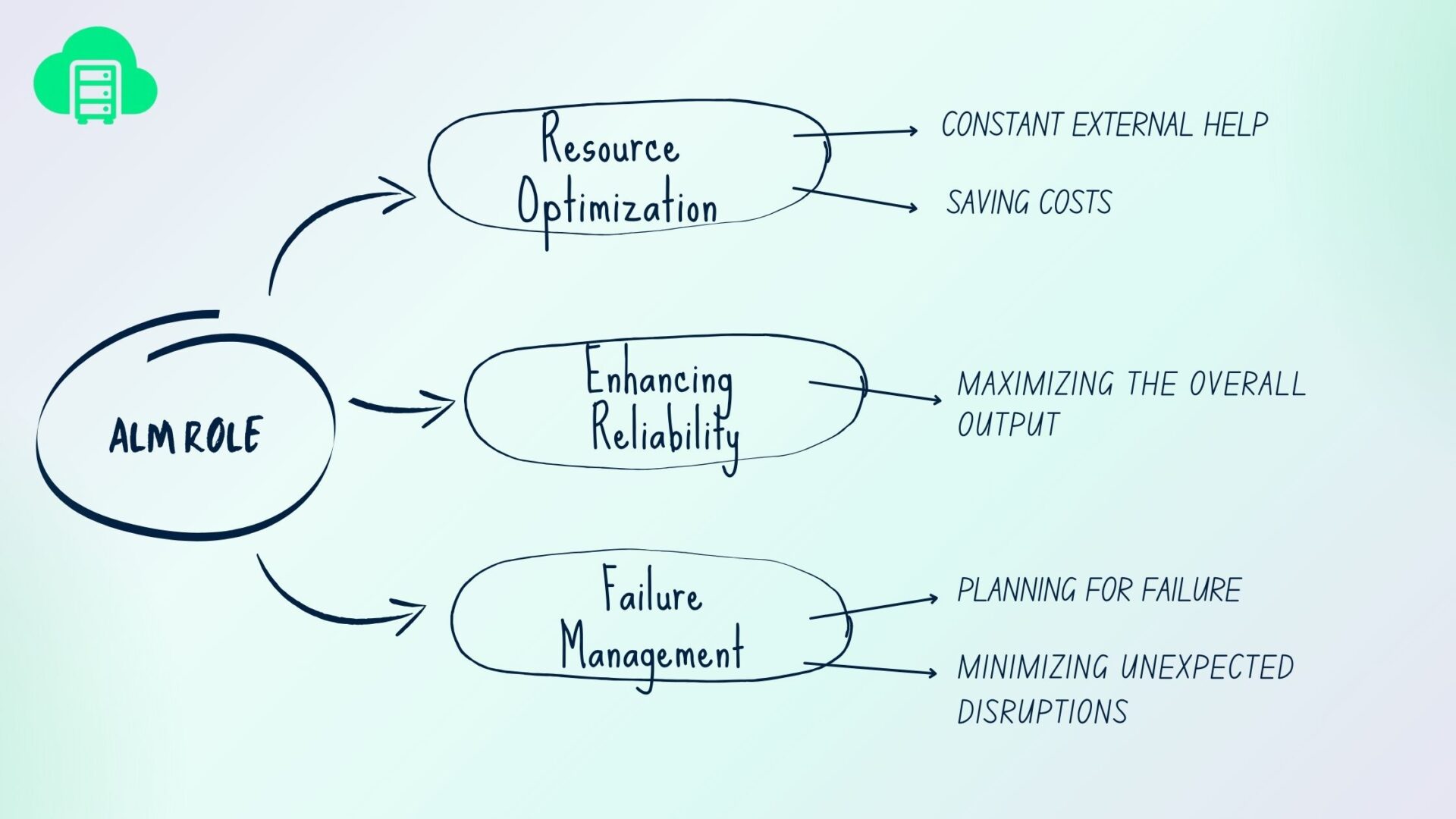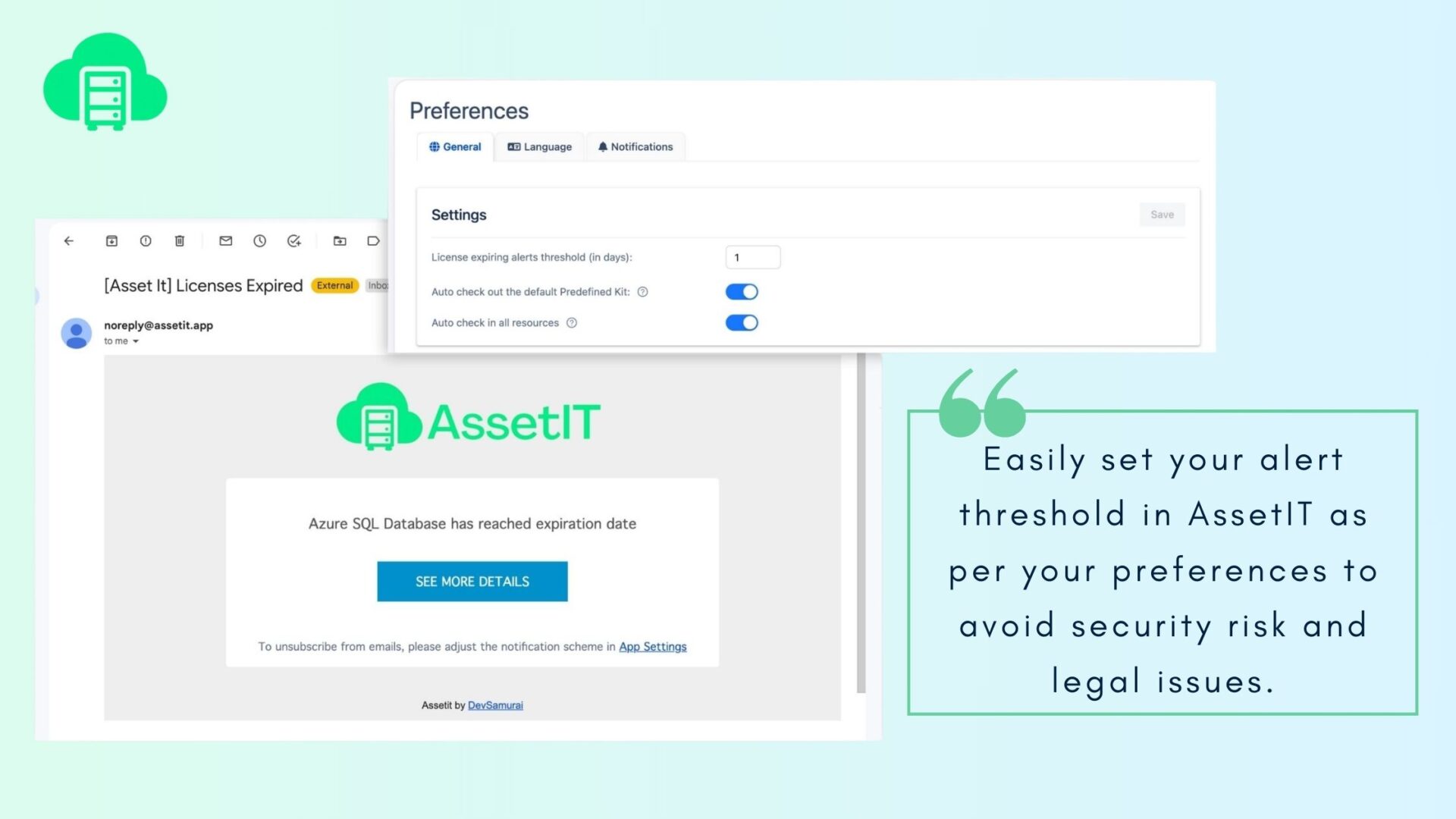Community resources
Community resources
Community resources
ITSM Insight | Asset Lifecycle Management in Jira ITAM

🌟 Hey there! Remember how we chatted about IT service Management (ITSM) and IT Asset Management (ITAM) before? (If you’ve missed it, no worries; check this out: ITSM Insight | ITSM and ITAM for Jira: An Essential Partnership). We have also illustrated how they work better together with the contribution of AssetIT. That’s why today we're going to dig a bit deeper into a really important part of Jira ITAM that sometimes gets overlooked - Asset Lifecycle Management (ALM). 😊
In the fast-paced world of IT where Jira is a big deal for staying efficient, it's super important to keep track of your IT assets from start to finish. This time around, we're going to show you how AssetIT, a solution of asset management for Jira, isn't just making Jira ALM better. It's changing the game to make everything more adaptable and precise.
💡 Understanding Asset Lifecycle Management in Jira ITAM
The Definition
Asset Lifecycle Management, a core component of ITAM, is the strategic approach to managing the life journey of an asset from procurement to disposal. This journey encompasses several stages: planning, acquisition, operation, maintenance, and disposal. At each stage, decisions are made that impact the asset's effectiveness and the organization's bottom line. For instance, careful planning and procurement ensure the right assets are acquired, avoiding unnecessary expenses. During operation and maintenance, the focus shifts to maximizing asset utility and minimizing downtime, while the final stages involve deciding when and how to dispose of or replace the asset efficiently.
More details on the 5 Key Stages of Jira ITAM: 5 Key Stages of The Atlassian Asset Management Process.
Asset Lifecycle Management: Broadening ITAM's Reach
However, there's more than just managing the stages of an asset's life when it comes to Asset Lifecycle Management. It's also about understanding and optimizing the broader impacts of these assets on your entire organization. Let's explore some key areas where Asset Lifecycle Management significantly contributes to Jira ITAM:
- Vendor Management and Relationships: It's not just about buying IT assets; it's about building strong relationships with those who supply them. This can hugely affect what you get, how much you pay, and how available your assets are.
- Integration with Other Business Processes: The process of asset management for Jira doesn't work in isolation. They're part of a bigger picture, interacting with other business processes. Aligning them properly can boost performance and efficiency across your organization.
- User Training and Adoption: The best Jira asset management tools are only as good as the people using them. Making sure your team is well-trained and comfortable with these tools can make a big difference in how effectively they're used.
- Change Management: IT is always evolving. Managing how changes in your IT assets are implemented can help reduce disruptions for your users and other systems.
- Asset Lifecycle Analytics: With advanced analytics, you can really dive deep into how your assets are performing. This helps you predict when they'll need maintenance or replacement.
- Disaster Recovery and Business Continuity: If something goes wrong, like a disaster, you need a plan to get your Jira assets back online quickly. This is crucial to keep your business running smoothly.
- Customization and Configuration Management: Every business has unique needs. Managing how your Atlassian assets are customized and configured helps meet these needs while keeping everything standardized and under control.
💡 Why Asset Lifecycle Management Matters
You might be wondering why there's a need to focus on Asset Lifecycle Management. After all, if the traditional system isn't broken, why fix it? These are valid questions, especially when considering significant changes to your Jira ITAM infrastructure. The answer lies in what we call the three key benefits: resource optimization, enhanced reliability, and controlled failure management.

Resource Optimization
Think of your big IT assets. They can be resource-hungry, consuming time, money, and effort, especially when they're problematic. Effective Asset Lifecycle Management for Jira ITAM means less time fixing and more time doing productive work. It reduces the need for constant external help, saving costs and improving efficiency.
Enhancing Reliability
Different maintenance types serve varied business needs, but all businesses gain from more reliable assets. Focusing on Asset Lifecycle Management shifts your approach to a reliability-centric model. This isn't just about keeping things running; it's about maximizing the overall output and positively impacting your business.
Controlled Failure Management
Failures happen, but it's about managing them smartly. Jira Asset Lifecycle Management emphasizes proactive maintenance. It's about planning for failure and minimizing unexpected disruptions. A planned outage is always preferable to a sudden breakdown.
💡 Best Practices for Asset Lifecycle Management in Jira ITAM
Building a Detailed Asset Inventory
The cornerstone of effective ALM is an exhaustive inventory. This should go beyond mere listing; every asset needs to be documented with its specifications, purchase details, and usage guidelines. Including software licenses and intellectual properties in this inventory ensures a holistic view.
Strategic Lifecycle Planning for Each Asset
This involves crafting a tailored plan for every asset, factoring in its projected lifespan, maintenance needs, operational costs, and eventual disposal strategy. The plan should be dynamic, allowing adjustments as per technological advancements and changing business needs.
Leveraging Advanced Tracking Technologies
Employing modern tracking solutions, such as IoT sensors, GPS tracking, or advanced IT asset management systems, provides real-time data on asset location, condition, and usage patterns. This high-level tracking facilitates proactive management and decision-making.
When it comes to a comprehensive solution for asset management for Jira, AssetIT should be taken into consideration. Let’s explore some of AssetIT’s highlights to learn how it can contribute to the growth of your Jira ITAM process, which leads to the success of your organization’s IT asset management.
🚀 Asset Onboarding in AssetIT
Asset onboarding involves the integration and management of new assets into an existing system or workflow. AssetIT is an asset management plug-in for Jira that will be seamlessly integrated into the Jira platform. This benefits organizations when they work on their Jira asset management process and project management at the same time.
The integration will streamline the inclusion of new assets into an organization's workflow, making asset allocation and tracking more efficient and reducing the risk of oversight or mismanagement.
AssetIT shows Jira issues linked to the assets
🚀 Tracking by QR code
AssetIT offers a QR code for each asset. This feature speeds up the asset management process by enabling quick access to asset details through QR code scanning. Moreover, it ensures error-free data entry for accurate tracking and streamlines asset location and status updates to maintain the Jira ITAM process.
Most significantly, Bulk Change in AssetIT allows users to generate QR codes for multiple assets simultaneously. This is particularly beneficial for large inventories, reducing manual work. Since it enhances operational efficiency and saves significant time, AssetIT indeed becomes the ultimate choice to elevate Jira ITSM practices.

🚀 Renewal Alerts in AssetIT
One of the most challenging aspects of asset management is staying up-to-date with every inventory within the organization. What causes more pain are intangible assets—licenses or contracts in particular. The larger the organization, the more licenses they need to keep an eye on. That’s why notification systems matter.
Acknowledging the cost of security risk and legal issues, including violation fines associated with overlooking expired licenses, the system in AssetIT plays a crucial role. It proactively tracks license expirations and prompts timely renewals. This functionality is key to avoiding service disruptions caused by expired licenses.

AssetIT also helps gain insights into existing license utilization and identifies unused or underused licenses to optimize software resources and reduce costs. The license tracking feature supports data-driven decision-making for strategic planning, aligning software investments with business needs and long-term goals.

Implementing Preventive Maintenance Schedules
Rather than waiting for breakdowns, a schedule of regular maintenance, guided by manufacturer recommendations and usage data, is essential. This approach reduces downtime and extends the asset's operational life.
Focused Training Programs for Asset Handling
Comprehensive training programs for staff, tailored to the specific assets they manage, are crucial. This training should cover not just operational procedures but also basic troubleshooting and care instructions, fostering a sense of ownership and responsibility.
Proactive Performance Monitoring and Analysis
Systematic monitoring of asset performance using analytics tools helps identify patterns and potential issues before they escalate. This process can include regular audits, performance reviews, and leveraging predictive analytics to forecast maintenance needs.
Ethical and Sustainable Disposal Practices
The end of an asset's life cycle should be handled with a focus on sustainability. Options like recycling, refurbishing, or donating should be prioritized over simple disposal, aligning with environmental responsibilities and potentially offering financial returns.
Ongoing Optimization of ALM Processes
The world of technology and business is ever-evolving, necessitating continual reassessment and improvement of ALM processes. This includes staying abreast of new technologies, methodologies, and regulatory changes that can impact asset management.
Integrating ALM with Broader Business Strategies
Asset Lifecycle Management should be integrated into the wider business strategy. This means aligning asset procurement and disposal with business objectives, market conditions, and future growth plans.
Ensuring Compliance and Risk Management
Compliance with industry standards and regulations should be a key component of the ALM strategy. This includes managing risks related to asset failure, data security, and legal liabilities.
In a Nutshell
Asset Lifecycle Management in Jira ITAM, enhanced by AssetIT, is a game-changer for organizations striving for efficiency and precision in IT asset management. By embracing the comprehensive approach of ALM, from strategic planning and advanced tracking to proactive maintenance and sustainable disposal, businesses can optimize resources, enhance reliability, and manage failures more effectively.
AssetIT's integration into Jira ITAM streamlines this process, offering many more features to help you keep track of your IT assets. For more information, check out AssetIT’s Documentation Center and try it for free on Atlassian Marketplace or on sandbox.devsamurai.com.
Stay tuned for our next blog in this series, where we’ll dive into Risk Management in ITAM and its Role in ITSM.
If you have any inquiries or feature suggestions, please visit the Support Desk for prompt assistance.
Was this helpful?
Thanks!
Atlassian Community Events
- FAQ
- Community Guidelines
- About
- Privacy policy
- Notice at Collection
- Terms of use
- © 2025 Atlassian






